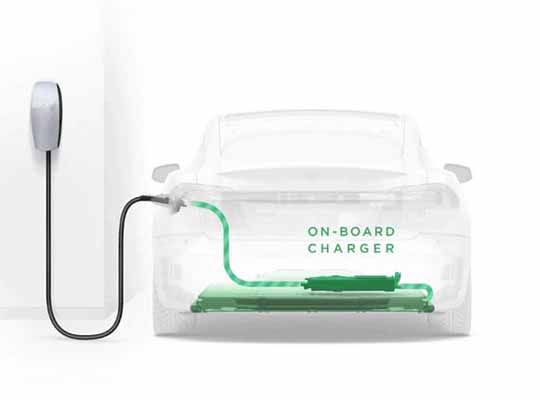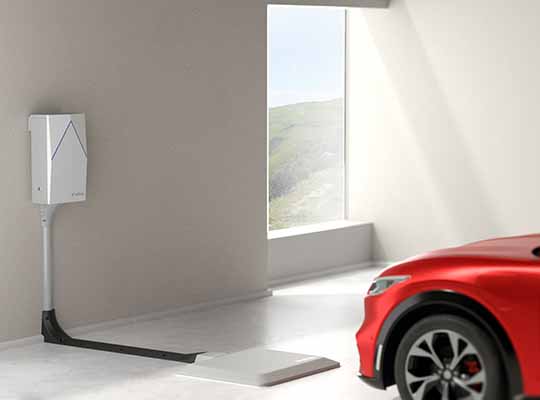The “Electric Vehicle On-Board Charger Market – Global Industry Size, Share, Trends, Opportunity, and Forecast, 2018-2028 Segmented By Propulsion Type, By Vehicle Type, By Charging Power, By Demand Category, By Design Type, By Product Type, and By Region” report has been added to ResearchAndMarkets.com‘s offering.
Global Electric Vehicle On-Board Charger market has shown decent growth in the past few years, and it is anticipated to increase at a high rate in the forecast years 2023E-2028F
Certainly, the economy has been significantly impacted by the evolution of vehicle engine propulsion technology from coal-fired engines to gasoline- and electric-fired engines. In the end, this evolution has strengthened the operating capabilities of the automotive sector, including greater safety measures, connection, cost savings, and consumer convenience.
The global automotive sector is going through significant change because of shifting consumer behavior and stricter environmental requirements. There has been an increasing need for alternative energy to lessen the dependency on fossil fuels for transportation because of the rapid depletion of natural resources, particularly fossil fuels.
Governments, environmental organizations, and automakers responded by creating alternative fuel cars. As a result, consumers welcomed the electric vehicle (EV), which originated as a specialized solution, as an alternative.
Compact and lightweight On-Board Chargers (OBCs) are in high demand because they can deliver excellent charging efficiency, a strong heat dissipation effect, and a high power density. In the European region and in China, many automotive manufacturers started working on the deployment of electric vehicles in recent years, as electric vehicle sales are higher in China and in European countries.
Initially, the adoption of electric vehicles in many countries is slow due to various reasons such as the battery capacity on a single charge, the number of charging stations, etc. The distance an EV can travel on a single charge is a significant barrier to speedier EV adoption among customers. This is because many nations, including India, Brazil, and certain European nations, lack adequate charging infrastructure.
Need for Increased OBC Power Level
To maintain reasonable quick charging times, Electric Vehicle batteries are being constructed with higher capacities. The level-2 chargers used by the first electric vehicles had a peak power of about 3.8 kW. Level-2 OBCs in current automobiles range in power from 6.6 kW to 11 kW.
To provide convenient onboard charging and reduce range anxiety, it is, therefore, economical to install high-power onboard chargers into EVs. In addition, despite the expanding DC fast charging infrastructure, significant effort must be made to get ready for the anticipated demand. Off-board chargers will be expensive to buy and install, and utility suppliers will need to upgrade their distribution systems.
Increasing Adoption of Electric Vehicles
Due to people’s distinctly modern lifestyle choices, automotive products are presently a necessity for everyone in the world. In terms of technology and customer experience, the automotive sector is undergoing a paradigm shift.
The electrification of automobiles, autonomous technologies, and linked platforms are three of the top advancements anticipated to have an impact on the automotive business. The adoption of EVs has significantly increased financing for R&D, innovation, and new commercial opportunities.
The development of battery pack technology and battery charging technology are two crucial research topics for the widespread deployment of EVs. One of the major technical trend-setters that utilized novel production and supply chain procedures is Tesla Inc. It focuses on all-electric vehicles and how they are supported by cutting-edge vehicle design, operational safety, effective energy management, and in-cabin features.
Metal-Oxide Semiconductor Field-Effect Transistor (MOSFET)
Bipolar transistors from earlier generations were used in the vehicle’s drivetrain, but they weren’t totally trustworthy because the semiconductor surface wasn’t passivated. In place of bipolar transistors, Metal-oxide semiconductor field-effect transistors (MOSFETs) are used in the vehicle’s drivetrain nowadays, and the channel length of (MOSFETs) is constantly decreasing for fabrications.
The basic component for creating integrated circuits (ICs), the MOSFET, is mostly utilized for switching and amplification of electrical signals. The dominance of MOSFET technology in digital circuits and system-on-chip (SoC) integrated substrate systems used as gate drivers in various automotive components is due to benefits such as simple prototyping, low-cost scalability, and optimum dependability.
Demonstration of Environmental Commitment
Cities may benefit from the increasing use of electric vehicles in numerous ways, including a reduction in carbon dioxide which is emitted from gasoline vehicles, and air pollution. Alarming temperatures have been documented in nations all over the world because of rapid urbanization and a steep increase in the sales of gasoline-powered cars. Governments, environmental organizations, and automakers are encouraging the development and marketing of electric vehicles to stop the worrisome rise in temperature and pollution levels.
The market for onboard chargers is expected to expand as a result of the OEMs’ heavy focus and investment in their research and development activities to satisfy the demands for green vehicles, provide an alternate solution for gasoline-powered vehicles, and save time.
Market Dynamics
Market Drivers
- Demonstration Of Environmental Commitment and Its Support Of Brand Values
- Sprouting of New Government Policies, and Initiatives
Market Trends & Developments
- Increasing the Charging Power of On-Board Charger
- Increasing Adoption of Dc-Dc Integrated On-Board Chargers,
- Growing Market Penetration Due to Addition of Market Players
Market Challenges
- Increasing Push from Government for Deployment of Highway/Fast Chargers
- Lack of Technological Advancement in EV Charging Infrastructure
Competitive Landscape
Company Profiles: Detailed analysis of the major companies present in the Global Electric Vehicle On-Board Charger Market.
- Meta System S.p.A
- Robert Bosch GmbH
- BorgWarner Inc
- HELLA GmbH & Co. KGaA
- Lear Corp.
- Ficosa Internacional SA
- BRUSA Elektronik AG
- YAZAKI Corporation
- KOSTAL Automobil Elektrik GmbH & Co. KG
- Analog Devices, Inc
Report Scope:
Electric Vehicle On-Board Charger Market, By Propulsion Type:
- Battery Electric Vehicles (BEVs)
- Plug-In Hybrid Electric Vehicles (PHEVs)
Electric Vehicle On-Board Charger Market, By Vehicle Type:
- Passenger Vehicles
- Commercial Vehicles
Electric Vehicle On-Board Charger Market, By Charging Power:
- < =6.6kW
- 6.7-11.0kW
- 11.1-22.0kW
- >22.0kW
Electric Vehicle On-Board Charger Market, By Demand Category:
- OEMs
- Aftermarket
Electric Vehicle On-Board Charger Market, By Design Type:
- Unidirectional
- Bidirectional
Electric Vehicle On-Board Charger Market, By Product Type:
- Without Embedded DC/DC Converter
- With Embedded DC/DC Converter













